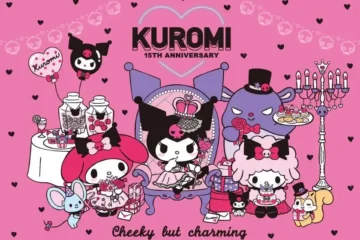The Roaring ’20s: A Look Back at the Top Cartoons of the Decade

Top Cartoons of the Decade
The 1920s, also known as the Roaring ’20s, were a decade of cultural shifts, economic prosperity, and technological advancements that were transformative in history. Cartoons were one of the many forms of entertainment that emerged during this time period. They piqued the interest of people of all ages. Cartoons became a popular way to tell stories and laugh from silent animated shorts to synchronized sound. This article returns a nostalgic excursion to the top sketch of the 1920s, featuring their importance and getting through impact on the universe of liveliness. Do you know about Amira Brie
Steamboat Willie” (1928) – Walt Disney
Thought about a milestone in movement, “Steamship Willie” denoted the presentation of Mickey Mouse, a person who might turn into a persevering symbol. This short film was made by Walt Disney and Ub Iwerks. It was one of the first animated films to use music and sound effects in sync. Disney Studios’ future success was established by Mickey Mouse’s mischievous antics on a steamboat, which delighted audiences.
Felix the Cat” (1920) – Pat Sullivan and Otto Messmer
Felix the Feline, made by Pat Sullivan and Otto Messmer, was one of the most famous animated characters of the 1920s. Known for his naughty and cunning nature, Felix left on different undertakings that enamored crowds. Felix set the standard for animated characters with his flexible body and expressive eyes, inspiring subsequent animators. Felix the Cat became a well-known symbol of the era as the character’s popularity spread beyond cartoons.
Krazy Kat” (1913-1944) – George Herriman
Despite the fact that Krazy Kat dates back to before the 1920s, this decade saw a significant rise in its popularity. This comic strip that was turned into an animated series was created by George Herriman. It featured the surreal and whimsical adventures of the naive Krazy Kat and the mischievous Ignatz Mouse. “Krazy Kat” pushed the boundaries of animated storytelling with its distinctive art style and underlying themes of love, friendship, and self-expression. It had a lasting impact on the medium.
Out of the Inkwell” (1918-1929) – Max Fleischer
Rotoscoping was first used in Max Fleischer’s “Out of the Inkwell” series, where live-action footage was traced and turned into animated characters. The mishaps of Koko the Clown, who interacted with the real world in a surreal blend of animation and live-action, were the focus of the show. The industry was transformed by this novel approach to animation, paving the way for subsequent advancements in the art form.
Alice Comedies” (1923-1927) – Walt Disney
Before Mickey Mouse, Walt Disney made the “Alice Comedies,” a progression of true-to-life/movement mixture films. These short movies followed the experiences of a surprisingly realistic young lady named Alice, who wound up in energized wonderlands. Disney’s commitment to innovation and creativity is demonstrated by the imaginative storytelling and seamless integration of live-action and animation, which set a new standard for animated storytelling. FAQS about Amira Brie
Conclusion
The sketches of the 1920s were pioneers in the realm of activity, making way for the groundbreaking years to come. These animated cartoons pushed the boundaries of storytelling and won the hearts of audiences all over the world with groundbreaking techniques like synchronized sound and animation. Mickey Mouse, Krazy Kat, and Felix the Cat rose to prominence as cultural icons and left an indelible mark on the animation industry. We recognize the significance of these influential cartoons as we reflect back on them. Read more










